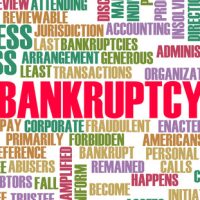How Do Chapter 13 Repayment Plans Work?

One of the key differences between a Chapter 7 and Chapter 13 bankruptcy filing is that the latter requires the debtor to come up with–and follow–a repayment plan. In Chapter 7, a debtor’s nonexempt assets (if any) are liquidated and used to pay back creditors, with any remaining debts discharged by the court. This means that the debtor is not required to pay back their creditors, and in many cases they leave Chapter 7 with what little property they have intact.
Chapter 7 is typically used by debtors with few assets and little income. With Chapter 13, in contrast, the debtor has some form of regular income that enables them to support a repayment plan. In some respects, the Chapter 13 repayment plan is similar to a consolidation loan. Instead of negotiating individually with each creditor, the Chapter 13 repayment plan has the debtor making a single monthly payment to a court-appointed trustee, who then ensures each individual creditor is paid.
Paying Back Priority, Secured, and Unsecured Creditors
In many cases, a debtor will have the choice of whether or not to file for a liquidation bankruptcy under Chapter 7 or a repayment plan bankruptcy under Chapter 13. Chapter 7 does, however, require the debtor to pass a “means test,” which looks at whether or not they have sufficient disposable income to support a repayment plan. If they do, then they may be required to file for Chapter 13 instead.
When a debtor files for Chapter 13, they need to also file a proposed repayment plan. This can be done either with their bankruptcy petition or within 14 days of filing the petition. As previously noted, the repayment plan requires the debtor to make periodic payments–usually monthly, but sometimes biweekly–to the bankruptcy trustee. A bankruptcy trustee will then convene a meeting of the creditors. The debtor is required to appear at this meeting and answer questions under oath from the trustee or any creditors who show up. Aside from this meeting, the debtor generally does not have any further direct contact with their creditors with respect to the repayment plan.
The repayment plan itself must specify the types of creditor claims involved: priority, secured, and unsecured. A “priority” claim is one that has special status under federal bankruptcy law, such as tax debts. “Secured” claims are those involving collateral, such as a home mortgage. Unsecured claims are all other debts, such as credit card bills.
The repayment plan typically must provide for repayment of priority claims in full. Secured claims must be repaid to at least the value of the collateral, assuming the debtor wishes to keep the property. Unsecured claims do not have to be paid in full, but the debtor must agree to pay all “projected disposable income” over the life of the plan to such creditors. A Chapter 13 repayment plan usually lasts between 3 and 5 years.
Contact Jacksonville Bankruptcy Attorney Carol M. Galloway Today
Chapter 13 repayment plans can simplify things for many debtors moving forward. But the process itself can be quite complicated. That is why it is important to work with an experienced Jacksonville Chapter 13 bankruptcy attorney. Contact the Law Offices of Carol M. Galloway, P.A., today to schedule a free initial consultation.
